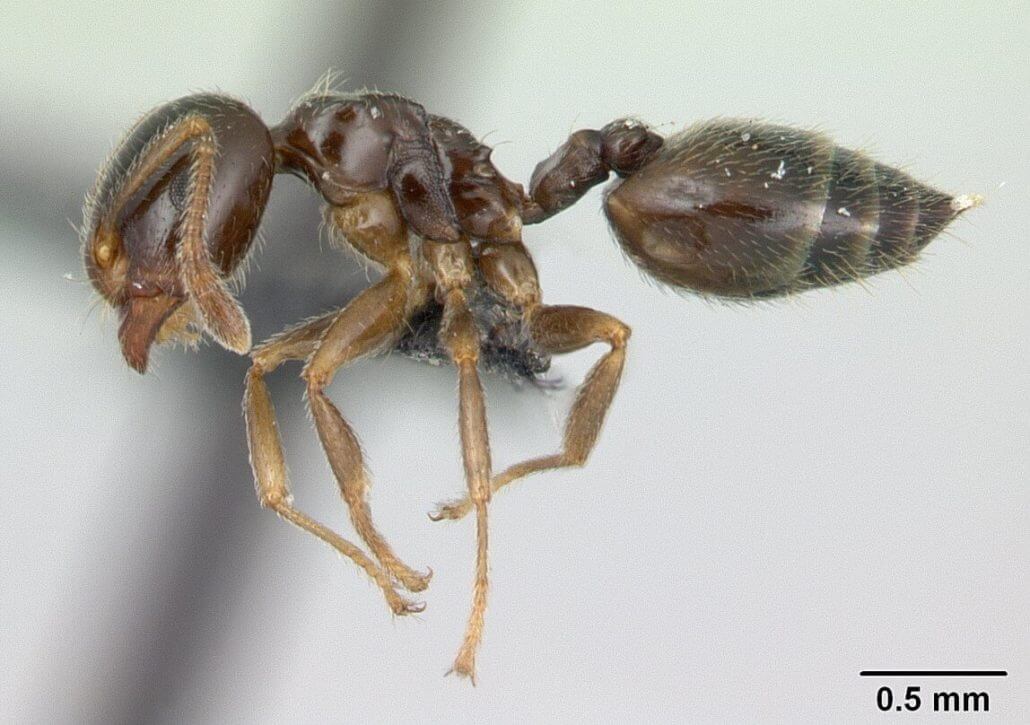Common Pests of Central Texas

Acrobat ants typically feed on honeydew, a sugary waste excreted by aphids and mealybugs, but they also eat live and dead insects including termite swarmers.
Outside, most species of acrobat ants nest under rocks or in logs, firewood and trees where wood decay allows them to create tunnels. They also build their nests in abandoned cavities carved out by other insects like termites and carpenter ants.
The workers often find a way inside homes by trailing along tree limbs and utility lines, and entering through cracks or holes around window frames, soffits, door thresholds, and other vulnerable spots. Once inside, acrobat ants typically nest in wall voids or wood that has been subjected to high moisture and fungal decay – the same conditions favored by carpenter ants. They have also been known to nest in Styrofoam insulation panels behind siding.
Acrobat ants may bite when threatened. In some species, workers may emit an unpleasant odor when disturbed.
These ants can also pose a risk to properties. Occasionally, acrobat ants will strip the insulation from electrical or telephone wires, which can cause short circuits.
Inspection is key to preventing an acrobat ant infestation. Keep a close eye on the exterior of the home for visible signs of these ants as they can trail over 100 feet.